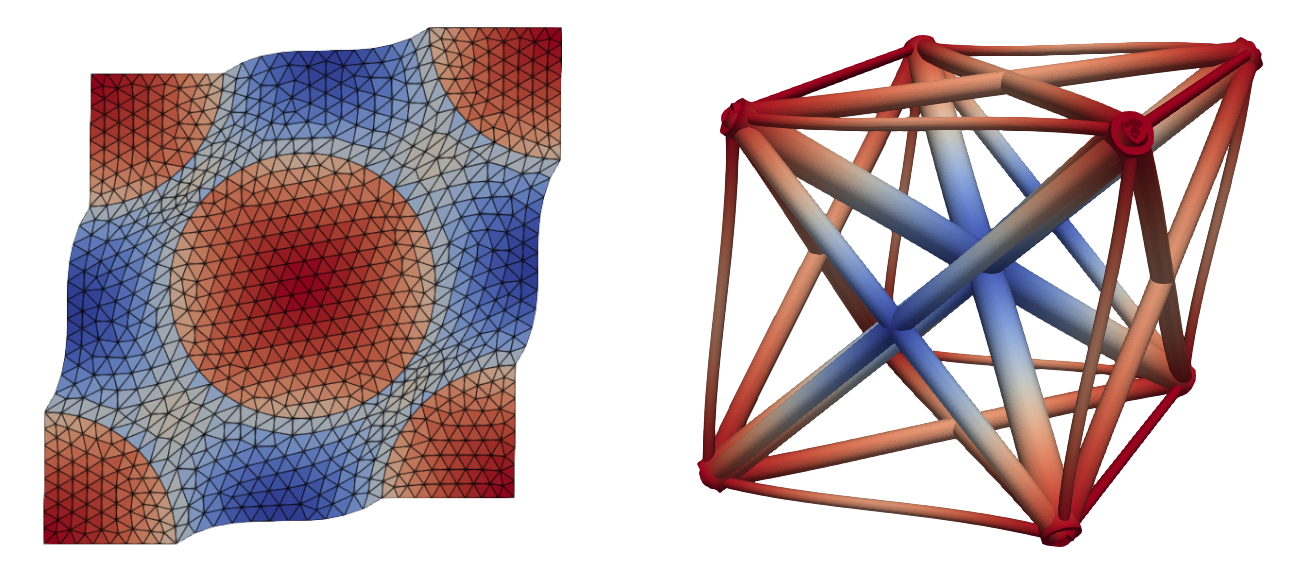Details
| Titel der Veranstaltung | Model Order Reduction in Computational Solid Mechanics |
| Modulnummer | TBA |
| TUCaN Kursnummer | TBA |
| Dozent:in | Prof. Dr.-Ing. Dominik Schillinger |
| Sprache | Englisch |
| Turnus | Winter |
| Credit Points | 6 |
| Prüfung | Mündliche Prüfung, Hausübungen |
Inhalte
Grundlagen und mathematischer Hintergrund
- Motivation der Modellreduktion (Many-Query-Probleme, Echtzeitanwendungen, hochdimensionale Szenarien)
- Traditionelle ingenieurwissenschaftliche Ansätze: statische Kondensation, modale Zerlegung
- Grundlagen parametrisierter partieller Differentialgleichungen
- Proper Orthogonal Decomposition (POD), Snapshots, Offline-/Online-Strategien
- Reduced-Basis-Methoden, Galerkin-Projektion und Orthonormalisierung, Sampling-Strategien
Modellreduktion in der numerischen Festkörpermechanik
- Computergestützte Homogenisierung heterogener Materialien
- Generalisierte Multiskalen-Finite-Elemente-Methoden
Fortgeschrittene Themen
- Stabilität, Systemkonditionierung, empirische Interpolationsmethoden
Hinweise
Gruppenübung
Die Übung ist in die Vorlesung integriert. Die einzelnen Termine werden auf den Vorlesungsstoff abgestimmt individuell abgehalten und möglichst frühzeitig bekannt gegeben.



